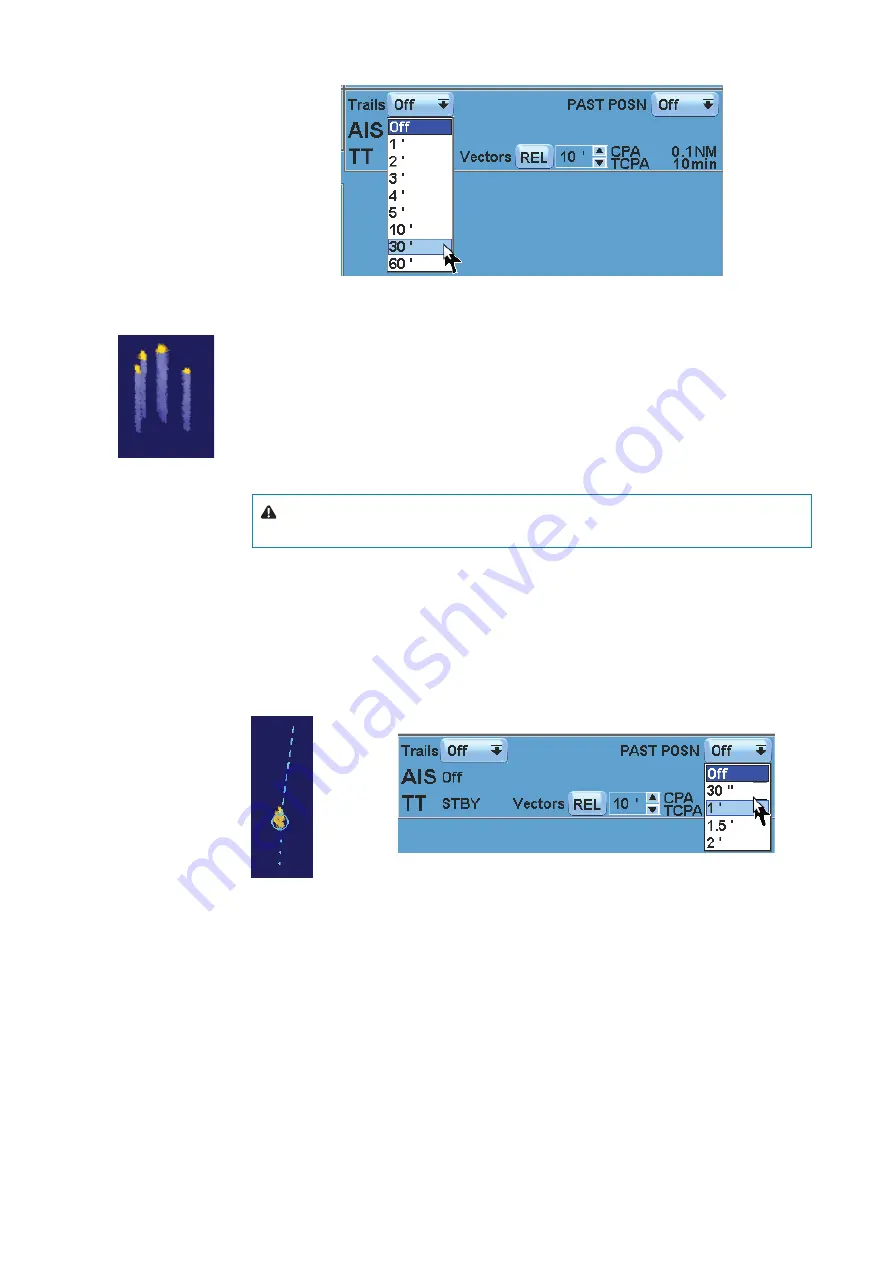
100 |
Tracking |
Argus Radar Operator Manual
The selection indicates the time for the trails to fade out.
The picture on the left shows four targets moving in North direction, the lighter blue repre-
sent the trails. The lower intensity of the color, the longer time since the target was in that
position. The trails are always processed, even if the operator decides not to display them. The
system will not cancel any trail processing even when the operator changes the range scale,
the True/Relative Motion display, or if a presentation reset is done. Once the operator chooses
to display the trails, True or Relative, the calculated trails will immediately appear on the
screen. Trails processing is interrupted and cancelled only if the operator changes the range
scale repeatedly quicker than the time it takes the antenna to make a complete rotation, or if
the Orientation Mode is changed.
Caution:
Trails build-up starts when exiting from the standby condition. Trails or past
position length will be reached only after the selected time duration.
Past positions
The Past Positions button function (See also “System data area sections” on page 23 and
page 26) is to visualise the last four positions of each target. Pressing the button, a list will
be opened, as in the figure on the left. The dots behind the target represent its position in the
past multiple of “t” time, where “t” is the time interval selected from the list shown in the figure
below.
This function is used to determine whether the target is manoeuvring or keeping a steady
course. The path is displayed with up to 4 dots, spaced with a time interval defined by the
selection in the list. True (T) past positions are visualized when in True Motion, relative past
positions are visualized when in Relative Motion. “(T)” and “(R)” are indicated on the left side of
the Past Position button.
¼
Note:
The past positions are not shown if the radar target symbols are Off.
Vector time
The Vector Time label allows setting the length of the vector drawn from the bow of each
target. The vector lengths are computed multiplying the target speed by this time value;
therefore, the length of the vector, represents the echo position according to the set minute’s
value. The line of the vector is dashed.
Содержание ARGUS FMCW 3G
Страница 1: ...ENGLISH ARGUSRADAR SYSTEM User Manual navico commercial com...
Страница 2: ......
Страница 149: ......
Страница 150: ...988 10185 004...
















































